
Logging is the process of cutting, processing, and moving trees to a location for transport. It may include skidding, on-site processing, and loading of trees or logs onto trucks or skeleton cars. In forestry, the term logging is sometimes used narrowly to describe the logistics of moving wood from the stump to somewhere outside the forest, usually a sawmill or a lumber yard. In common usage, however, the term may cover a range of forestry or silviculture activities.

Coppicing is the traditional method in woodland management of cutting down a tree to a stump, which in many species encourages new shoots to grow from the stump or roots, thus ultimately regrowing the tree. In a coppiced wood, which is called a copse or coppice, young tree stems are repeatedly cut down to near ground level, the resulting living stump called a stool. New growth emerges, and after a number of years, the coppiced tree is harvested, and the cycle begins anew. Pollarding is a similar process carried out at a higher level on the tree in order to prevent grazing animals from eating new shoots. Daisugi, is a similar Japanese technique.

Thinning is a term used in agricultural sciences to mean the removal of some plants, or parts of plants, to make room for the growth of others. Selective removal of parts of a plant such as branches, buds, or roots is typically known as pruning.
Silviculture is the practice of controlling the growth, composition/structure, as well as quality of forests to meet values and needs, specifically timber production.

An old-growth forest, sometimes synonymous with primary forest, virgin forest, late seral forest, primeval forest, first-growth forest, or mature forest—is a forest that has attained great age without significant disturbance, and thereby exhibits unique ecological features, and might be classified as a climax community. The Food and Agriculture Organization of the United Nations defines primary forests as naturally regenerated forests of native tree species where there are no clearly visible indications of human activity and the ecological processes are not significantly disturbed. Barely one-third of the world's forests are primary forests. Old-growth features include diverse tree-related structures that provide diverse wildlife habitats that increases the biodiversity of the forested ecosystem. Virgin or first-growth forests are old-growth forests that have never been logged. The concept of diverse tree structure includes multi-layered canopies and canopy gaps, greatly varying tree heights and diameters, and diverse tree species and classes and sizes of woody debris.

Clearcutting, clearfelling or clearcut logging is a forestry/logging practice in which most or all trees in an area are uniformly cut down. Along with shelterwood and seed tree harvests, it is used by foresters to create certain types of forest ecosystems and to promote select species that require an abundance of sunlight or grow in large, even-age stands. Logging companies and forest-worker unions in some countries support the practice for scientific, safety and economic reasons, while detractors consider it a form of deforestation that destroys natural habitats and contributes to climate change. Environmentalists, traditional owners, local residents and others have regularly campaigned against clearcutting, including through the use of blockades and nonviolent direct action.
In forestry, fishing and mining, high grading refers to the selective harvesting of goods to keep only the most valuable items. The term is frequently associated with fraud, especially in mining.
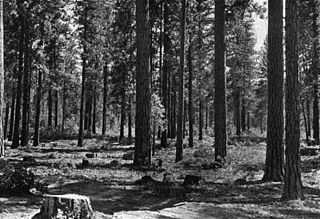
Selection cutting, also known as selection system, is the silvicultural practice of harvesting trees in a way that moves a forest stand towards an uneven-aged or all-aged condition, or 'structure'. Using stocking models derived from the study of old growth forests, selection cutting, also known as 'selection system', or 'selection silviculture', manages the establishment, continued growth and final harvest of multiple age classes of trees within a stand. A closely related approach to forest management is Continuous Cover Forestry (CCF), which makes use of selection systems to achieve a permanently irregular stand structure.
Hardwood timber production is the process of managing stands of deciduous trees to maximize woody output. The production process is not linear because other factors must be considered, including marketable and non-marketable goods, financial benefits, management practices, and the environmental implications, of those management practices.
Patch cuts are logging cuts too small to be considered clearcuts, and are instead considered a form of selection cut. A typical patch cut might be 2-3 tree lengths. Below a certain size, seedling regeneration advantage shifts from the shade intolerant species favored in clearcuts to the shade tolerant species favored by selection harvests.
The following outline is provided as an overview of and guide to forestry:
Variable retention is a relatively new silvicultural system that retains forest structural elements for at least one rotation in order to preserve environmental values associated with structurally complex forests.
Site index is a term used in forestry to describe the potential for forest trees to grow at a particular location or "site". Site is defined as "The average age of dominate and/or codominate trees of an even-aged, undisturbed site of intolerant trees at a base age"; furthermore, the word site is used in forestry to refer to a distinct area where trees are found. Site index is used to measure the productivity of the site and the management options for that site and reports the height of dominant and co-dominant trees in a stand at a base age such as 25, 50 and 100 years. For example, a red oak with an age of 50 years and a height of 70 feet (21 m) will have a site index of 70. Site index is species specific. Common methods used to determine site index are based on tree height, plant composition and the use of soil maps.
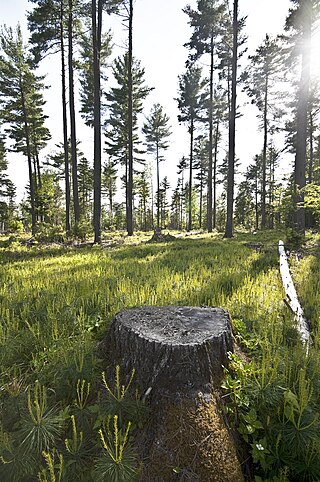
Shelterwood cutting is the progression of forest cuttings leading to the establishment of a new generation of seedlings of a particular species or group of species without planting. This silvicultural system is normally implemented in forests that are considered mature, often after several thinnings. The desired species are usually long-lived and their seedlings would naturally tend to start under partial shade. The shelterwood system gives enough light for the desired species to establish without giving enough light for the weeds that are adapted to full sun. Once the desired species is established, subsequent cuttings give the new seedlings more light and the growing space is fully passed to the new generation.
Stocking is a quantitative measure of the area occupied by trees, usually measured in terms of well-spaced trees or basal area per hectare, relative to an optimum or desired level of density. It is also used as a measure of the growth potential of a site that may be affected by vegetation in the area along with other nearby trees. Stocking can be shown as a ratio of the current stand density to the stand density of a maximally-occupied site. Stocking measures account for three things: the cover type and species mixture in the stand, the basal area per acre, and the number of trees per acre.
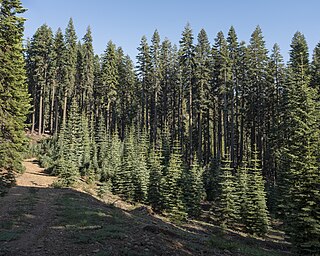
Even-aged timber management is a group of forest management practices employed to achieve a nearly coeval cohort group of forest trees. The practice of even-aged management is often pursued to minimize costs to loggers. In some cases, the practices of even aged timber management are frequently implicated in biodiversity loss and other ecological damage. Even-aged timber management can also be beneficial to restoring natural native species succession.
In forestry and silviculture, a sanitation harvest or sanitation cutting is a harvest of trees for the purpose of removing insects or diseases from a stand of trees. Sanitation harvesting is used to prevent the diseases or pests from spreading to other nearby trees. It is a form of intermediate management and is used in order to improve an already existing stand of trees.

Continuous cover forestry is an approach to the sustainable management of forests whereby forest stands are maintained in a permanently irregular structure, which is created and sustained through the selection and harvesting of individual trees. The term "continuous cover forestry" does not equate exactly to any one particular silvicultural system, but is typified by selection systems. For example coppice with standards and Reiniger's Target diameter harvesting are also continuous cover forestry. Different existing forest stands may require different silvicultural interventions to achieve a continuously productive irregular structure. Crucially, clearcutting and other rotational forest management systems are avoided.
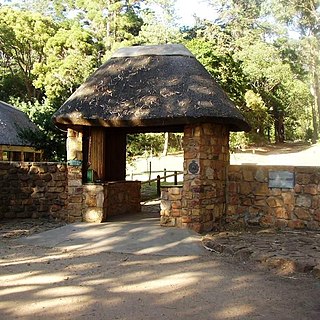
The Tokai Arboretum was the first large-scale silviculture experimental station in Cape Town, South Africa. The area of the main Arboretum, at Tokai Park, is 14 ha. Several adjacent compartments extend the area to 26 ha. The Arboretum was declared a National Monument in 1985, on its 100th anniversary. It contains stands of Eucalyptus and other trees from the original silviculture experiments in South Africa. In the 1990s a Gondwana Garden was created to display the plants typical of the Cape 100 million years ago.
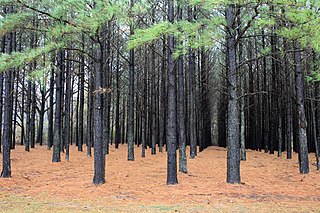
A tree plantation, forest plantation, plantation forest, timber plantation or tree farm is a forest planted for high volume production of wood, usually by planting one type of tree as a monoculture forest. The term tree farm also is used to refer to tree nurseries and Christmas tree farms.












